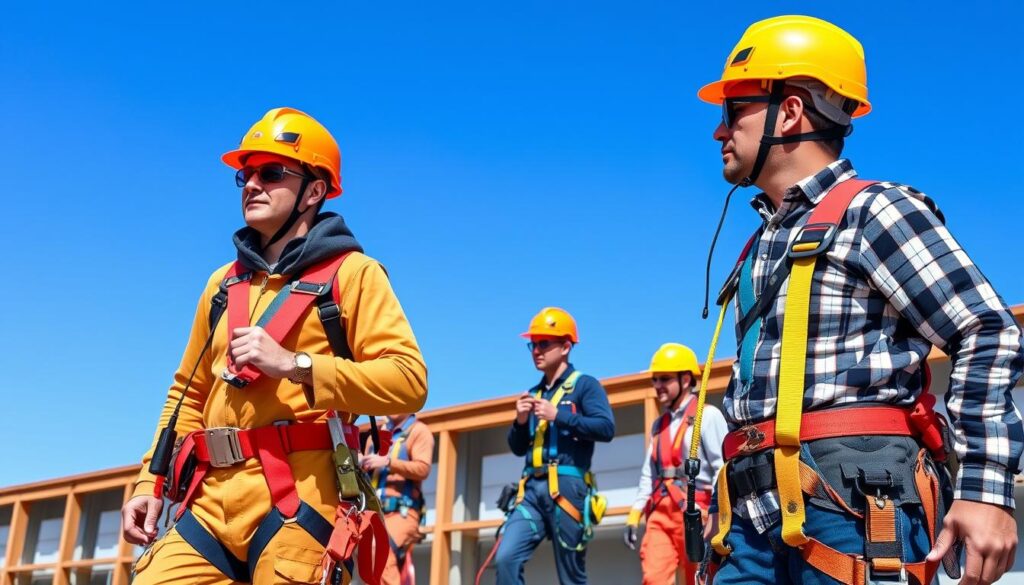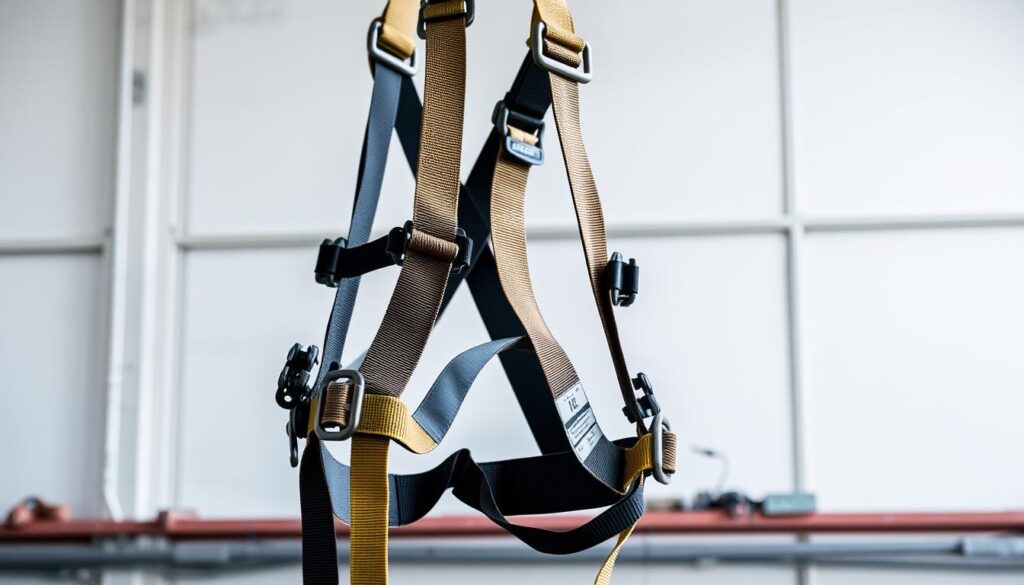As a safety professional, I am deeply concerned about the alarming prevalence of fall-related injuries in the construction industry. These workplace accidents pose a significant threat to the safety and well-being of construction workers. They also have far-reaching financial and reputational consequences for construction companies.
In this article, I aim to shed light on the true cost of fall-related injuries, exploring both the direct and hidden impacts that these incidents can have on the industry.
In the construction sector, where the work environment is inherently hazardous, fall-related injuries are all too common. From precarious scaffolding to uneven surfaces, the risks are ever-present, and the consequences can be devastating. By understanding the full scope of this issue, construction companies can make informed decisions to prioritize worker safety.
They can also mitigate the financial burdens associated with these incidents.

Throughout this article, I will delve into the various facets of fall-related injuries. I will cover the common types of falls, high-risk areas and activities, and current industry statistics and trends. By examining the direct financial impact on construction companies, as well as the hidden costs and long-term consequences, I aim to provide a comprehensive analysis of the true cost of these workplace accidents.
Furthermore, I will explore the regulatory landscape, including regulation requirements and the compliance expenses that construction companies must navigate. Finally, I will discuss the preventive measures and investment in safety. These can not only protect workers but also positively impact employee morale, company reputation, and market competitiveness.
Understanding Fall-Related Injuries in the Construction Industry
Falls are a major concern in the construction sector. Various hazards, like uneven surfaces and unsecured ladders, can cause severe falls. These incidents often lead to serious injuries or fatalities. It’s vital for construction firms to grasp the types of falls, high-risk zones, and current injury rates.
This knowledge aids in implementing robust fall protection and adhering to safety standards.
Common Types of Falls on Construction Sites
Falls from heights, including scaffolding, roofs, and ladders, are the most hazardous. Other frequent incidents include slips and trips on uneven or slippery surfaces. Additionally, falls through openings or from one level to another are common.
High-Risk Areas and Activities
- Roofing and residential construction
- Erecting and dismantling scaffolding
- Working near unprotected edges or floor openings
- Using ladders and lifts
- Performing maintenance and repair work
The Real Price of Fall-Related Injuries in Construction
Fall-related injuries in construction are more than just immediate medical costs. They deeply affect construction companies, their workers, and the entire industry.
At the heart of this issue are workers’ compensation claims from these injuries. These claims can skyrocket insurance premiums, severely impacting a company’s finances. Moreover, the time and resources needed to manage these claims are a significant burden.

Fall-related injuries also cause project delays and decreased productivity. When a worker is injured, their absence disrupts the entire workflow. This leads to missed deadlines and lost revenue.
- The effects of fall-related injuries can spread far, affecting a company’s ability to secure contracts and stay competitive.
- Indirect costs, like additional training and hiring replacement workers, add to the financial strain on construction companies.
The real cost of fall-related injuries in construction goes beyond immediate medical bills. It’s essential for companies to understand and tackle this complex issue. This is crucial for protecting workers, maintaining profitability, and ensuring long-term success.
Direct Financial Impact on Construction Companies
Fall-related injuries in the construction industry can significantly affect a company’s finances. These injuries lead to increased medical expenses, workers’ compensation claims, higher insurance premiums, and productivity losses. All these factors can severely strain a construction firm’s budget.
Medical Expenses and Workers’ Compensation
Treating fall-related injuries can be very costly. Workers often need extended hospital stays, rehabilitation, and long-term care. These costs are usually covered by workers’ compensation insurance. However, the premiums for such coverage can skyrocket after an incident, impacting the company’s finances.
Project Delays and Productivity Losses
After a fall-related injury, projects may experience delays and reduced productivity. An injured worker’s absence can disrupt the project timeline, forcing the company to find a replacement. This can lead to missed deadlines, contractual penalties, and decreased efficiency in the construction process.
| Impact | Average Cost |
| Medical Expenses | $50,000 – $100,000 |
| Workers’ Compensation Claims | $30,000 – $70,000 |
| Project Delays and Productivity Losses | $20,000 – $50,000 |
The combined effects of these financial impacts can be catastrophic for construction companies. It is essential for them to focus on preventing injuries and ensuring workplace safety to protect their financial health.
Hidden Costs and Long-Term Consequences
When discussing the true cost of fall-related injuries in the construction industry, it’s crucial to consider the hidden and long-term consequences that often go unnoticed. These costs can be just as significant, if not more so, than the immediate financial impact on construction companies.
One of the most significant hidden costs is the ongoing medical care and rehabilitation required for workers who have suffered serious injuries from falls. The potential disability accommodations can quickly add up, straining a company’s resources.
Additionally, fall-related incidents can lead to legal fees and potential lawsuits, further compounding the financial burden on construction companies. These legal proceedings can drag on for years, diverting valuable time and resources away from core business operations.

The psychological toll on workers and their families is another hidden cost that is often overlooked. Injuries from falls can result in trauma, anxiety, and depression, which can impact a worker’s ability to return to their job, ultimately affecting the company’s productivity and morale.
The ripple effect of fall-related injuries can also damage a construction company’s reputation, making it more challenging to secure new projects or retain skilled workers. Potential clients may be hesitant to collaborate with a company known for its poor safety record, and talented employees may seek employment elsewhere, further exacerbating the challenges faced by the organization.
Hidden Costs of Fall-Related Injuries
- Ongoing medical care and rehabilitation
- Legal fees and potential lawsuits
- Psychological impact on workers and their families
- Damage to company reputation and competitiveness
By recognizing and addressing these hidden costs and long-term consequences, construction companies can take proactive steps to prioritize worker safety, invest in effective construction safety measures, and ultimately protect the well-being of their employees and the financial stability of their organization.
| Hidden Cost | Potential Impact |
| Legal Fees and Lawsuits | Significant legal costs, diversion of resources |
| Psychological Impact on Workers | Decreased morale, challenges with employee retention |
| Damage to Company Reputation | Difficulty securing new projects, loss of market competitiveness |
“The true cost of a fall-related injury extends far beyond the immediate financial impact. Addressing the hidden and long-term consequences is crucial for construction companies committed to protecting their workers and safeguarding their long-term success.”
By understanding and addressing the hidden costs and long-term consequences of occupational hazards and injury prevention in the construction industry, companies can make informed decisions to prioritize worker safety and investment in effective safety measures.
The Regulations and Compliance Expenses
Construction companies face a daunting task in adhering to the safety standards set by the legislation. These rules aim to safeguard workers from the dangers of falls, but they come with a substantial cost. Managing these expenses is crucial for firms.

Required Safety Equipment and Training
Protecting construction workers begins with the right personal protective equipment (PPE) and training. The cost of gear like harnesses and lanyards, along with guardrails and safety nets, can escalate quickly. Moreover, the investment in employee safety training is vital but also a considerable expense.
Penalties and Legal Requirements
Ignoring the regulations can lead to severe fines and legal repercussions. These penalties, which can range from thousands to millions of dollars, pose a significant financial risk. Companies of all sizes must take these costs seriously.
Preventive Measures and Investment in Safety
Protecting construction workers from fall-related injuries demands a proactive stance. Investing in fall arrest systems, comprehensive construction safety training, and promoting a culture of injury prevention can greatly reduce risks and costs.
Advanced fall arrest systems, like harnesses, lanyards, and anchor points, act as a crucial defense against falls. These systems protect workers and show a company’s dedication to their safety. It’s vital to train workers on the correct use and upkeep of this equipment to ensure its effectiveness.
- Implement regular inspections and maintenance of fall arrest systems to ensure they are in optimal condition.
- Provide comprehensive training programs to educate workers on the proper use of fall protection equipment and safe work practices.
- Encourage a culture of safety where workers feel empowered to identify and report potential hazards, fostering a collaborative approach to injury prevention.
The initial investment in construction safety may seem costly, but the long-term benefits are significant. Lowering the frequency and severity of fall-related incidents can lead to fewer workers’ compensation claims, lower insurance premiums, and more efficient projects.
“An ounce of prevention is worth a pound of cure. Investing in safety not only protects our workers but also safeguards the financial well-being of our company.”
By focusing on preventive measures and creating a safety culture, construction companies can greatly reduce the impact of fall-related injuries. This benefits their workforce, their financial health, and their reputation in the industry.
Impact on Worker Morale and Company Reputation
Fall-related injuries in construction have far-reaching effects, extending beyond immediate costs. They significantly impact worker morale and a company’s reputation. When workers feel their safety is neglected, job satisfaction plummets. This leads to increased turnover and challenges in hiring and retaining skilled employees. Conversely, a robust safety record boosts a company’s industry standing and competitive edge.
Employee Retention and Recruitment Challenges
Construction workers who have faced or seen fall accidents often lose faith in their employer’s safety commitment. This can cause a spike in employee turnover, as skilled workers seek safer environments. Moreover, attracting new talent becomes harder, as potential employees fear for their safety in companies with poor records.
Conclusion
A company’s safety reputation is crucial for market competitiveness. Clients and project owners often prioritize safety when choosing construction firms. A strong safety record can give a company a significant advantage.
On the other hand, a history of accidents makes a company less appealing, limiting its ability to secure projects and stay competitive.
